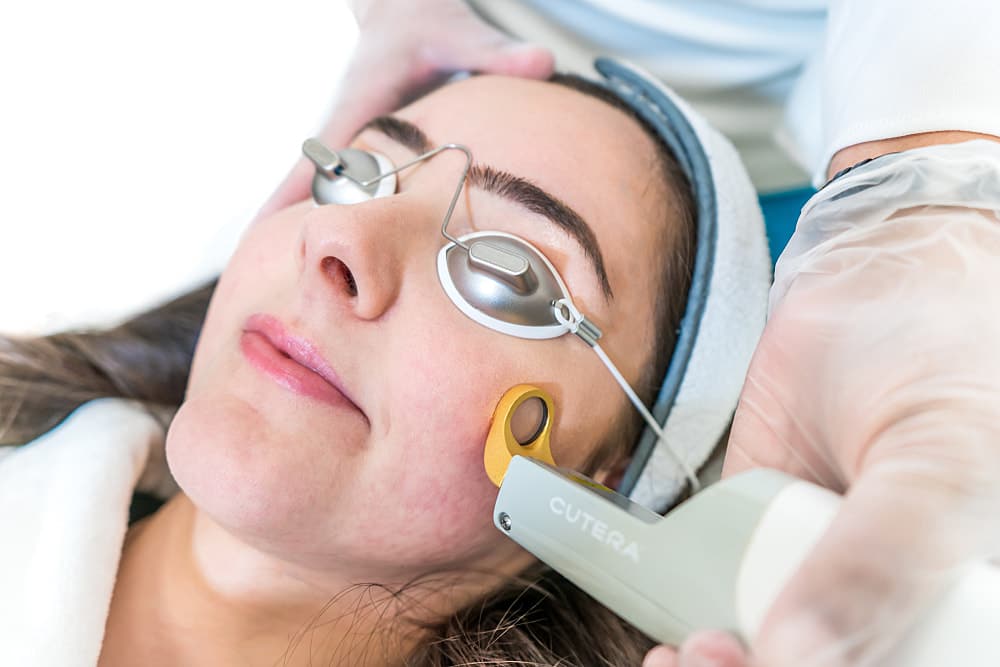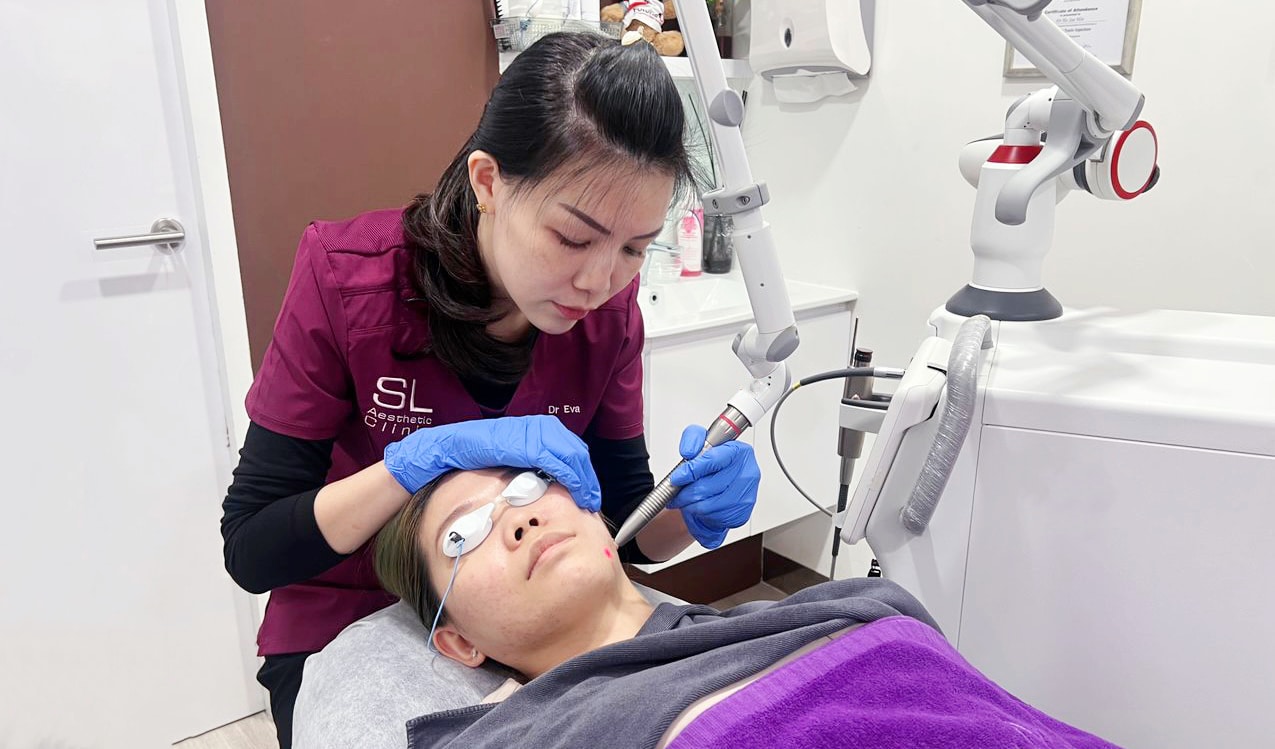
Dr Eva Teh: Acne Scars Vs Post-inflammatory Hyperpigmentation
- October 13, 2023


Acne scars and post-inflammatory hyperpigmentation are sometimes confused but the two conditions have different causes. It’s therefore important for us to understand the nuances of both skin conditions so that we can get the best treatment and result.
Let’s take a good look at both conditions, and what we should do about them.
Post-inflammatory hyperpigmentation (PIH) is a condition where the skin becomes darker in patches following an inflammatory wound or injury. It’s a response to skin inflammation such as acne, eczema, or other skin injuries.
When the skin is injured or inflamed, the body’s natural response is to produce more melanin, the pigment that gives skin its colour. This overproduction can result in darker patches on the skin where the inflammation occurred.
PIH is usually harmless and often fades over time, but it can be a cosmetic concern for many people.
It’s worth noting that PIH can affect people of all skin types, but it may be more noticeable in individuals with darker skin tones.
PIH manifests as flat, darkened patches or spots on the skin, with colours ranging from brown to black or even red, depending on the skin tone and type of inflammation. Unlike acne scars, PIH doesn’t cause any changes to the skin’s texture, so the affected area will feel the same as the surrounding skin, remaining smooth and unchanged.
Both PIH and acne scars can occur in areas where there has been skin inflammation or injury, but they differ in their specific location on the skin.
PIH is a superficial condition that affects the epidermis, the outermost layer of the skin, resulting in darkened patches or spots. It can appear anywhere on the body where inflammation has occurred, such as after acne, eczema, or an injury.
PIH may gradually fade over several months to a few years, depending on the individual’s skin type and care. Sun protection and topical treatments can often expedite this process.
PIH, being a change in pigmentation at the skin’s surface, often responds well to topical treatments like hydroquinone, glycolic acid, or retinoids, which can lighten the affected areas. Sun protection is also vital in preventing PIH from becoming more pronounced. With consistent care, PIH may fade over time, even without treatment, although this process can be slow.
Acne scars are permanent textural changes in the skin that occur because of severe acne. When an acne lesion heals, the way the skin repairs itself can lead to a scar. If the body produces too much collagen, it can create a raised area on the skin, known as a hypertrophic or keloid scar. Conversely, if there’s a loss of tissue, it can result in a depressed or atrophic scar.
These atrophic scars can be further categorised into ice pick scars (deep and narrow), rolling scars (broad depressions with sloping edges), and boxcar scars (wide with sharp edges). The formation of acne scars is influenced by factors such as the severity and type of acne, delayed treatment, genetics, and skin type.
Acne scars are more than just a cosmetic concern; they can also impact a person’s self-esteem and emotional well-being. The enduring nature of acne scars reflects the lasting alteration in the skin’s structure, making them a complex and often challenging condition to manage.
Also Read: Are Acne Scars Permanent? The Truth About Acne Scars
Acne scars are primarily characterised by changes in the skin’s texture, leading to indentations or raised areas. The specific appearance of these scars can vary, with some being deep and narrow, others having broad depressions with sloping edges, and some being wide with sharp edges. Acne scars themselves may not necessarily have a different colour from the surrounding skin, although they can sometimes be hyperpigmented or hypopigmented.
The primary distinction between PIH and acne scars lies in the flat, discoloured appearance of PIH, contrasting with the textured nature of acne scars. While PIH deals with changes in pigmentation without alteration in texture, acne scars are identified by changes in texture, which can sometimes be accompanied by changes in colour.
Unlike PIH’s more superficial nature, acne scars are changes in the deeper layers of the skin, affecting both the epidermis and the underlying dermis. They specifically form in areas where acne lesions have healed, leading to either raised or depressed scars.
Acne scars are often considered permanent because they result from damage to the skin’s collagen and underlying structure during the healing process of acne lesions.
These changes in the skin’s texture create indentations or raised areas that don’t naturally revert to the original skin structure. Unlike post-inflammatory hyperpigmentation, which affects only the skin’s pigment and can fade over time, acne scars alter the physical structure of the skin.
Acne scars involve changes in the skin’s texture and are often more challenging to treat. They may require more intensive professional treatments like laser therapy, dermal fillers, chemical peels, or microneedling.
These treatments aim to stimulate collagen production, resurface the skin, or fill in depressions, addressing the structural changes that characterise acne scars. The success of these treatments can vary widely depending on the type and severity of the scars, the chosen treatment method, and individual factors like skin type and overall health. Some scars may show significant improvement, while others may be more resistant to treatment.
While post-inflammatory hyperpigmentation may not be permanent, having to cover up spots on your skin as you go through your day can be bothersome. Here are some ways you can treat this skin condition:
Cyspera: Also known as cysteamine hydrochloride, Cyspera is a topical treatment specifically designed to address hyperpigmentation issues, including post-inflammatory hyperpigmentation (PIH). It is often considered a safer alternative to other skin-lightening agents like hydroquinone, which can have side effects and may not be suitable for long-term use.
Cyspera works by inhibiting the production of melanin, the pigment responsible for skin colour. It does this by affecting the metabolic pathway of melanin synthesis, reducing the activity of an enzyme called tyrosinase, which is crucial for melanin production. By inhibiting this enzyme, Cyspera helps to lighten hyperpigmented areas, making them less noticeable.
Pico Laser: This popular laser treatment uses ultra-short pulses of laser light to target various skin issues, including post-inflammatory hyperpigmentation. The Pico laser treatment works by targeting the melanin that causes hyperpigmentation. When the laser light is absorbed by the melanin, it shatters the pigment into tiny particles. These particles are then naturally eliminated by the body’s immune system, leading to a reduction in the appearance of hyperpigmented areas.
There are a wide number of options when it comes to treating acne scars. Some of them include:
Laser Therapy: Utilises focused light to resurface the skin, stimulating collagen production and reducing the appearance of scars. Different types of lasers may be used depending on the scar type.
Chemical Peels: Involves applying a chemical solution to remove the top layer of skin, promoting new skin growth. This can help reduce the appearance of shallow scars.
Dermal Fillers: Injectable substances used to fill in depressed scars, creating a smoother skin surface. Fillers may be temporary or semi-permanent.
Microneedling: Uses fine needles to puncture the skin, stimulating collagen production. This can help improve the texture of both depressed and raised scars.
Subcision: A surgical technique that involves cutting beneath the scar to release fibrous tissue, allowing the scar to rise to the skin’s surface level.
Dermabrasion: A mechanical resurfacing technique that sands down the top layers of skin to reduce the appearance of scars.
Topical Treatments: Creams or gels containing retinoids or other active ingredients that can help in mild scarring by promoting skin cell turnover.
Radiofrequency Therapy: Utilises radiofrequency energy to stimulate collagen production, improving the skin’s texture and appearance.
Dealing with acne scars requires experience and knowledge for safe and effective treatment. Patients who wish to receive lasting treatment to reduce the appearance of acne scars or post-inflammatory hyperpigmentation should undergo a detailed examination by a qualified doctor, who will then arrive at a suitable treatment option based on their skin type, condition, and budget.
If you are sick of seeing spots and scars on your face when you look into the mirror every day, SL Aesthetic clinic can provide the necessary diagnosis and treatment to reduce the appearance of these bothersome scars.
Like what you read? Share them!